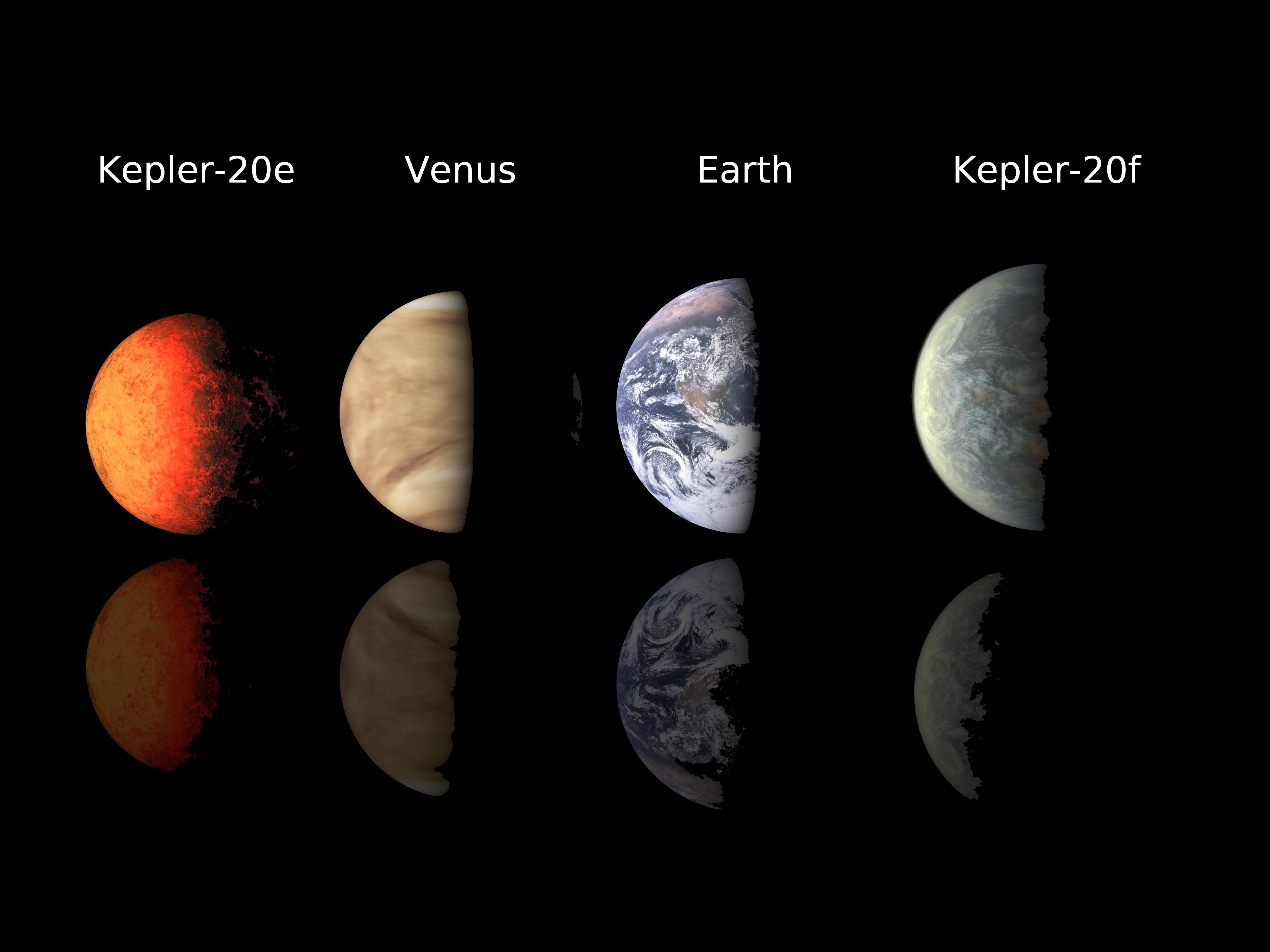Two weeks ago NASA announced the first planet is the habitable zone of another star. Yesterday they announced the discovery of the first Earth-size planets orbiting a sun-like star outside our solar system.
The planets, called Kepler-20e and Kepler-20f, are too close to their star to be in the so-called habitable zone but they are the smallest exoplanets ever confirmed around a star like our sun.
The discovery marks the next important milestone in the ultimate search for planets like Earth. The new planets are thought to be rocky. Kepler-20e is slightly smaller than Venus, measuring 0.87 times the radius of Earth. Kepler-20f is a bit larger than Earth, measuring 1.03 times its radius. Both planets reside in a five-planet system called Kepler-20, approximately 1,000 light-years away in the constellation Lyra.
Kepler-20e orbits its parent star every 6.1 days and Kepler-20f every 19.6 days. These short orbital periods mean very hot, inhospitable worlds. Kepler-20f, at 800 degrees Fahrenheit, is similar to an average day on the planet Mercury. The surface temperature of Kepler-20e, at more than 1,400 degrees Fahrenheit, would melt glass.
On a separate note, NASA announced that the Kepler spacecraft experienced a processor reset on 12/7 most likely due to a galactic cosmic-ray burst. They were able to quickly recover the spacecraft which is now operating as expected. This again highlights the extreme dangers of working in space and some of the factors that must be taking into consideration when designing space missions especially when talking about human deep space missions.

Leave a Reply